The Position of Matcha in Tea Ceremony
The Japanese tea ceremony, known as “chado,” is recognized worldwide as a symbol of Japanese culture. At its center is matcha, with its vibrant green color and distinctive aroma. The relationship between tea ceremony and matcha goes beyond that of a simple beverage and its preparation ritual—it embodies a deep connection that represents Japanese aesthetics and spirituality.
The Spiritual Significance of Matcha in Tea Ceremony
In the tea ceremony (chanoyu), matcha is far more than just a beverage. In the “wabi-cha” philosophy perfected by Sen no Rikyu in the 16th century, a bowl of matcha expresses the spirit of “wa-kei-sei-jaku.” This represents the fundamental spirits of tea ceremony: “wa” (harmony), “kei” (respect), “sei” (purity), and “jaku” (tranquility).

When entering the tea room, the host prepares each bowl of matcha with care, imbuing it with a spirit of hospitality and the concept of “ichigo ichie” (one-time encounter). In tea ceremony, which is deeply connected to Zen philosophy, the act of preparing and drinking matcha itself becomes a form of practice and a meditative time for self-reflection.
The Evolution of Matcha Throughout Tea Ceremony History
The central role of matcha in tea ceremony began when Zen priest Eisai brought back the method of making matcha from China during the Kamakura period. Initially valued as medicine, matcha developed into a ceremonial drink called “tocha” in samurai society during the Muromachi period.
However, the true turning point came during the Azuchi-Momoyama period. With “wabi-cha” perfected by Sen no Rikyu, tea ceremony transformed from the “shoin-cha” style decorated with gold leaf and luxurious furnishings to tea gatherings in simple, wabi-style tea rooms. The value system shifted from expensive tea bowls like the National Treasure “Yohen Tenmoku” to simple pottery like raku ware.
In modern tea ceremony, matcha is carried on by various schools such as Omote-senke, Ura-senke, and Mushanokoji-senke. According to a 2019 survey, Japan’s tea ceremony population is estimated at about 2 million people, many of whom continue to preserve Japanese traditional culture through matcha.
The Relationship Between Tea Ceremony Etiquette and Matcha
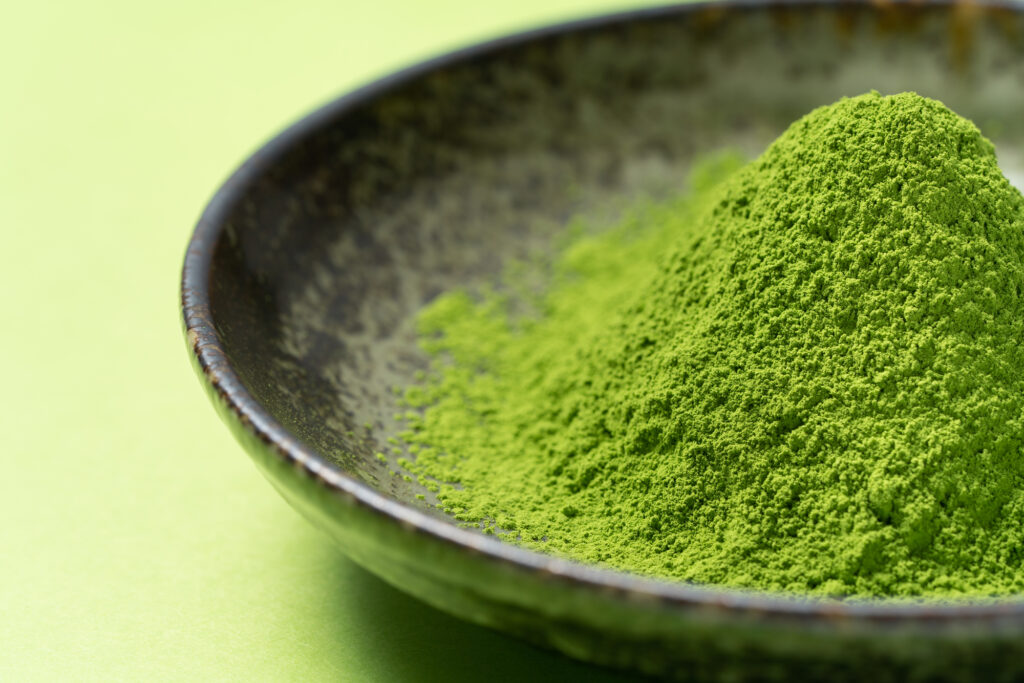
In tea ceremony, the etiquette for preparing matcha has meaning down to the smallest detail. The action of whisking matcha with a bamboo whisk (chasen), turning the front of the tea bowl toward the guest, and the custom of rotating the bowl before drinking—all these embody Japanese culture of “kata” (form).
Particularly noteworthy is how the preparation and drinking of matcha embodies the spirituality of tea ceremony. The concentration when whisking matcha with a chasen, the humility in holding the tea bowl carefully with both hands, the grateful heart in savoring each sip—these are all reasons why matcha occupies a central position in the cultural system of “chado.”
The Historical Connection Between Tea Ceremony and Matcha: Unraveling a Thousand-Year Bond
The Historical Introduction of Matcha to Tea Ceremony
The relationship between tea ceremony (chanoyu) and matcha dates back to the Kamakura period in the 12th century. At that time, Zen priest Eisai brought back tea seeds and production methods from China and authored “Kissa Yojoki,” marking the beginning of matcha culture in Japan. Initially consumed by aristocrats and samurai as medicine, matcha gradually developed into a culture accompanied by spirituality.
Notably, Murata Juko established the concept of “wabi-cha” during the Muromachi period, transforming tea ceremony from the luxurious “karamono chado” (Chinese-style tea ceremony) to a Japanese tea ceremony that valued simple beauty. According to historical materials, during this period, matcha’s position in tea ceremony was elevated from a mere beverage to a tool for spiritual cultivation.
The Completion of Tea Ceremony and the Spirituality of Matcha
In the tea ceremony perfected by Sen no Rikyu, the spirit of “wa-kei-sei-jaku” was emphasized. Under this philosophy, a deep meaning is embedded in the series of actions involved in preparing matcha. According to research by the International Research Center for Japanese Studies, the following spirituality is reflected in how matcha is handled in tea ceremony:
- Wa (harmony): The unity of hearts between host and guest
- Kei (respect): Respect for utensils and matcha
- Sei (purity): Physical and spiritual cleanliness
- Jaku (tranquility): The aesthetic sense of wabi-sabi
In tea ceremony, matcha is not merely a beverage but a medium that embodies these spiritual aspects. Japanese art historian Isao Kumakura describes, “Matcha in tea ceremony is the crystallization of Japanese aesthetic sense and spiritual culture.”
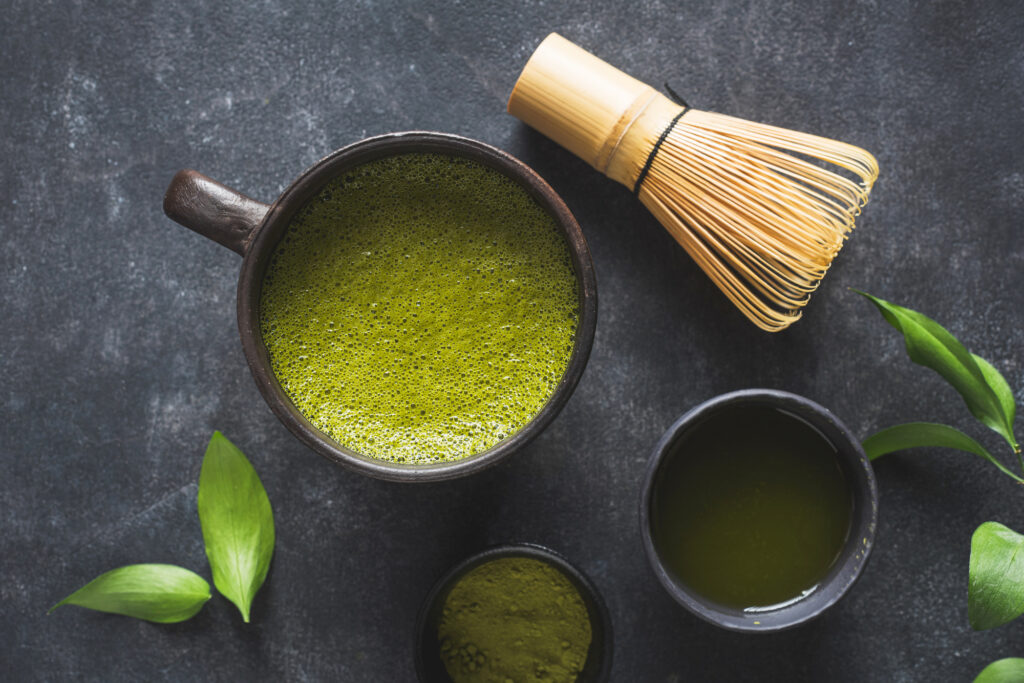
To this day, in tea ceremony etiquette, great care is taken in handling matcha, and everything from the sound of whisking with a chasen to the rising steam and how the tea bowl is held expresses the spirit of “ichigo ichie.” In this way, tea ceremony and matcha have influenced each other for over a thousand years, forming an important corner of Japanese culture.
The Role of Matcha in Chanoyu: A Spiritual World Expanding from One Bowl
The Spirit of “Ichigo Ichie” Born from a Bowl of Matcha
In chanoyu, matcha is not merely a beverage but becomes a spiritual bridge connecting host and guest. In the world of “wabi-cha” perfected by Sen no Rikyu, there is a profound philosophy of finding the universe in a bowl of matcha. The act of preparing a bowl of matcha in the tea ceremony creates a special time and space separated from everyday life, playing a role in uniting the hearts of those gathered.
According to research by the International Research Center for Japanese Studies, matcha in tea ceremony has shaped the core of Japanese culture for over 400 years as a medium embodying the spirit of “wa-kei-sei-jaku.” In particular, the concept of “ichigo ichie” teaches us the mindset of cherishing this moment through a bowl of matcha.
The Essence of Matcha Embedded in the “Kata” of Tea Ceremony
There are strict “kata” (forms) for preparing matcha in chanoyu. These “kata” are not mere formalities but embody the spirituality of tea ceremony. For example, in each action from chasen-toshi (rinsing the whisk) to wiping the tea bowl and whisking matcha with a chasen, the wabi-sabi aesthetics of “eliminating waste and discerning the essence” are reflected.
The master of “Shoraku,” a long-established tea utensil shop in Kyoto, says, “The handling of matcha in tea ceremony expresses Japanese aesthetic sense itself.” Indeed, tea ceremony etiquette is not just about drinking matcha deliciously but becomes a place for spiritual cultivation where one considers others, harmonizes with nature, and faces one’s inner self.
The Significance of Tea Ceremony and Matcha in Modern Society
In today’s increasingly digital society, the role of matcha in tea ceremony is becoming even more important. A 2022 survey by the Tea Ceremony Culture Research Institute found a 15% year-on-year increase in young people in their 20s and 30s starting to learn tea ceremony, with a stronger tendency to seek “peace of mind” and “understanding of Japanese culture.”
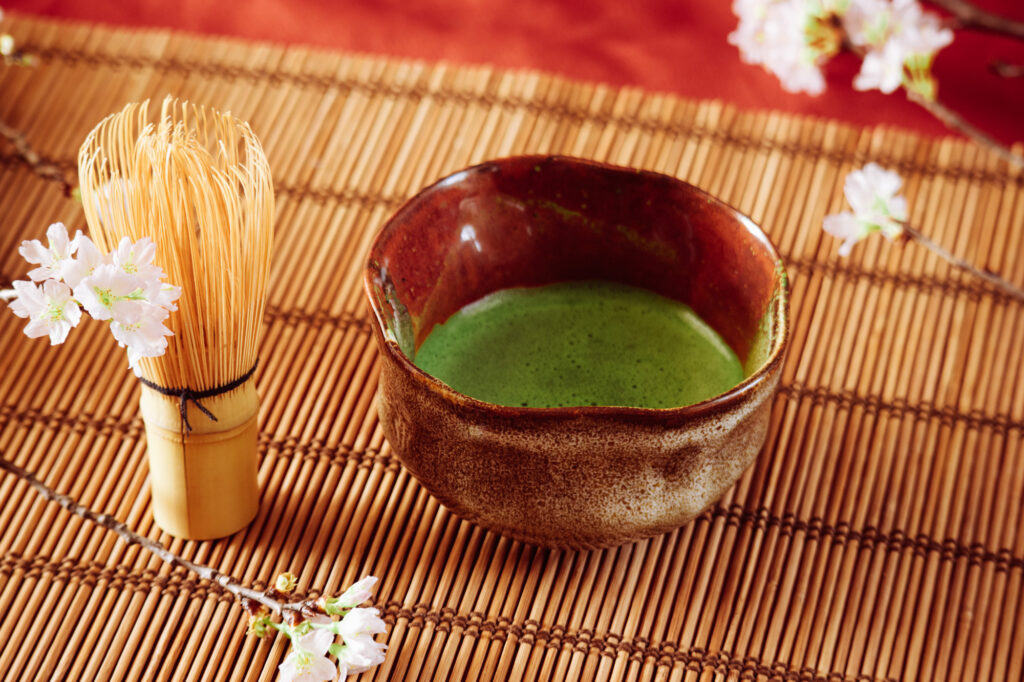
The series of actions involved in preparing matcha and offering it to guests embody the spirit of “omotenashi” (hospitality) that respects others. In the tea ceremony setting, a deeper exchange beyond words is born through a bowl of matcha prepared with care by the host. This non-verbal communication is perhaps the most important role of matcha in chanoyu.
Tea Ceremony Etiquette and Matcha: Aesthetics from Preparation to Appreciation
Basic Etiquette and Spirituality of Tea Ceremony
The temae (preparation) of matcha in tea ceremony is not merely the preparation of a beverage but an art where aesthetic sense and spirituality merge. Based on the spirit of “ichigo ichie,” which values the once-in-a-lifetime encounter, deep meaning is embedded in the series of actions to prepare matcha. From the action of purifying the tea bowl to chasen-toshi and then whisking matcha, all movements have no waste and harmony between beauty and efficiency.
According to research by the International Research Center for Japanese Studies, the number of foreigners learning tea ceremony etiquette has increased by about 40% over the past decade, and searches for “tea ceremony matcha” have been increasing yearly. This indicates that matcha culture is recognized globally as a spiritual culture beyond merely a beverage culture.
The Aesthetics of Matcha as Seen Through Temae
While there are subtle differences in temae among schools such as Omote-senke, Ura-senke, and Mushanokoji-senke, they share the spirits of “cleanliness,” “respect,” and “tranquility.” Particularly noteworthy is the movement that draws a “W” shape when whisking matcha with a chasen. This action is not just about frothing matcha but is considered an important moment that expresses the host’s heart.
In the world of “chanoyu matcha,” both the beauty and efficiency of temae are pursued simultaneously. For example, the action of rotating the tea bowl is a consideration to show the most beautiful side (the front) to the drinker while also having the practical meaning of equalizing the temperature of the bowl.
Guest Etiquette and Deepening Appreciation
In tea ceremony, the experience of “matcha chado” is important not only for the host but also for guests who have significant roles. The way of receiving, rotating, and drinking from the tea bowl contains the “significance of tea ceremony.” The etiquette of rotating the tea bowl two and a half times before drinking shows respect for the host while also reflecting aesthetic consideration not to soil the most beautiful part (the front) of the bowl.

According to the owner of a long-established tea utensil shop in Kyoto, “The appreciation of matcha is not just with the mouth; it is a comprehensive aesthetic experience felt with all five senses—seeing with the eyes, smelling the aroma, feeling the warmth of the tea bowl with the hands, and listening to the sounds of the tea room.” Thus, the appreciation of matcha in tea ceremony transcends mere taste experience to become a comprehensive aesthetic experience.
The Deep Relationship Between Matcha Quality and Tea Ceremony: Conditions and Selection of Fine Tea
Quality Standards for Matcha in Tea Ceremony
In tea ceremony, the quality of matcha holds meaning beyond mere taste. In tea gatherings conducted with the spirit of “ichigo ichie,” providing the best possible bowl of tea for guests becomes the core of hospitality. Historically, high-quality matcha called “meicha” (fine tea) has been evaluated by three elements: color, aroma, and taste.
Especially when preparing “koicha” (thick tea), selecting high-quality matcha is essential. Premium matcha produced in traditional tea regions such as Uji in Kyoto, Nara, and Shizuoka is particularly valued by tea ceremony practitioners. According to a tea ceremony-related survey in 2022, over 90% of tea ceremony master-level practitioners consider “origin and grade” as the most important criteria when selecting matcha.
Conditions for Matcha Valued by Tea Ceremony Practitioners
High-quality matcha used in tea ceremony has the following characteristics:
- Vibrant green color: Deep emerald color without dullness and with vividness
- Rich aroma: Harmony of refreshing young grass scent and sweet flavor
- Fineness of particles: Microparticles under 10 microns creating a smooth mouthfeel
- Balance of umami and sweetness: Not overly astringent, with a natural balance of sweetness and umami
- Lingering aftertaste: Complex flavor that continues long after consumption
Soan Murata, a tea ceremony professor from Ura-senke, states, “Selecting matcha in chanoyu is an act that reflects the host’s sincerity.” In tea ceremony, it is also an important etiquette to select matcha according to the season and purpose of the tea gathering. For example, there is consideration to choose matcha with a light taste and refreshing quality in summer and rich, deep matcha in winter.
How to Select Matcha Suitable for Tea Ceremony at Home
Even when enjoying tea ceremony at home, selecting good quality matcha greatly changes the quality of the experience. For beginners, it is recommended to check the following points:
- Those specifically labeled as matcha for tea ceremony (avoid those for confectionery)
- Those with recent production dates and kept refrigerated
- Brands recommended by tea masters or tea ceremony practitioners
- Those with vivid color and rich aroma
Matcha in tea ceremony is not just a beverage but also a medium that embodies the spirit of “wa-kei-sei-jaku.” The commitment to its quality reflects the essential values of tea ceremony. Developing an eye for selecting high-quality matcha is an indispensable element in deeply walking the path of tea ceremony.
ピックアップ記事

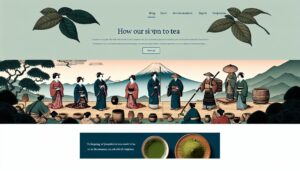
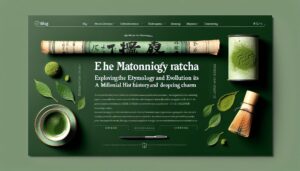
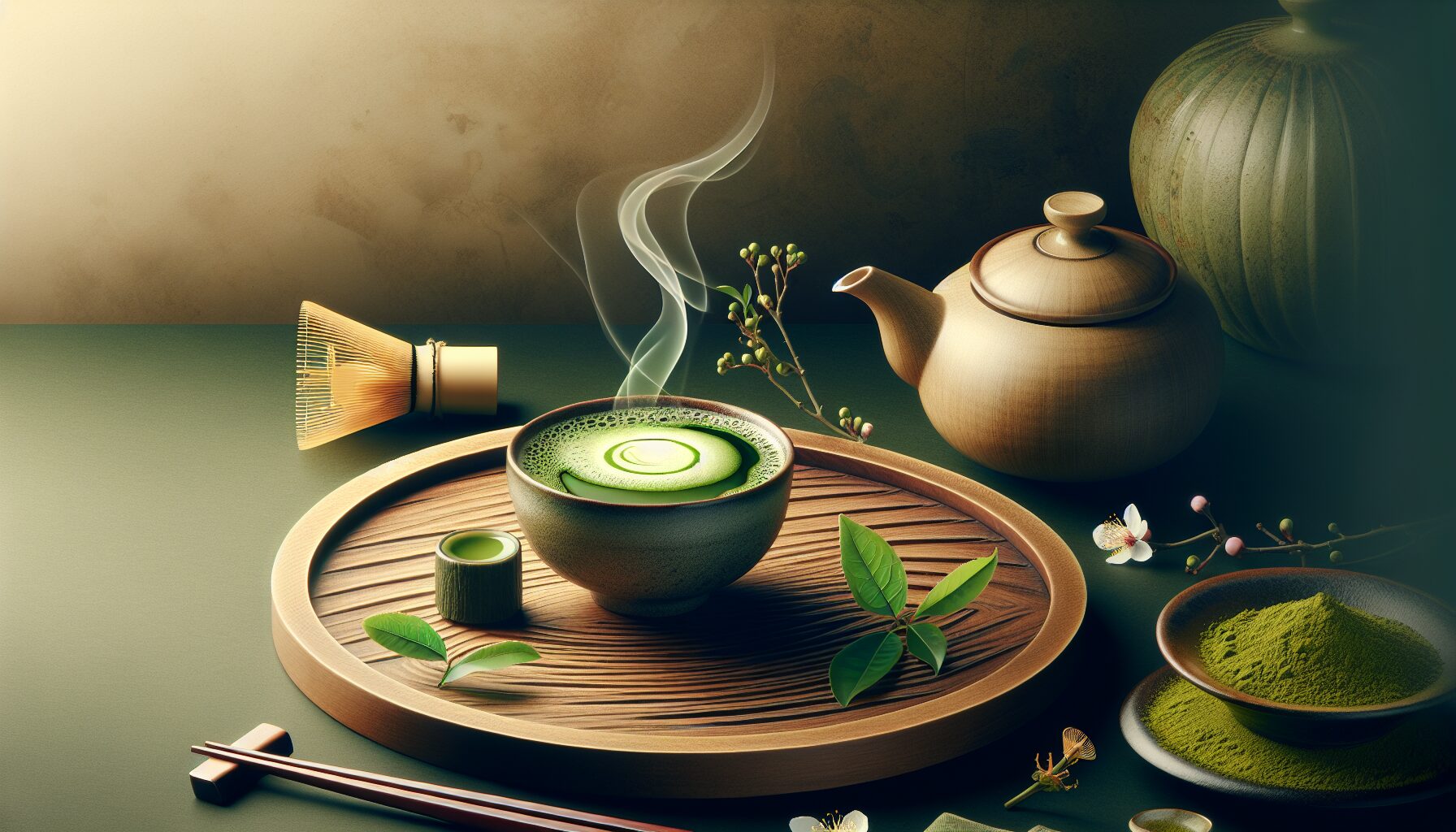

Comments